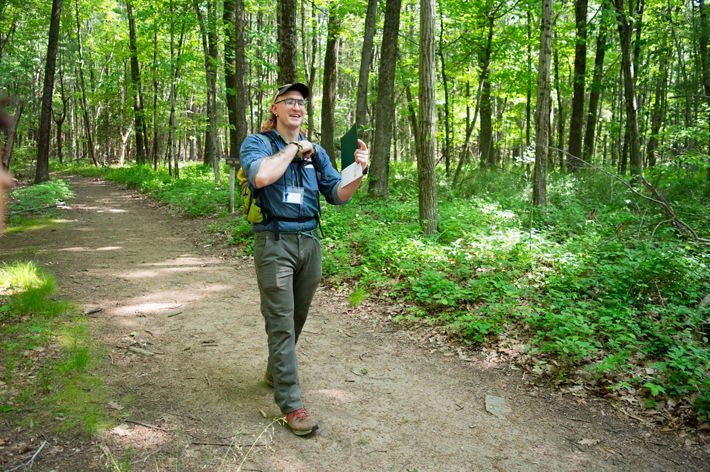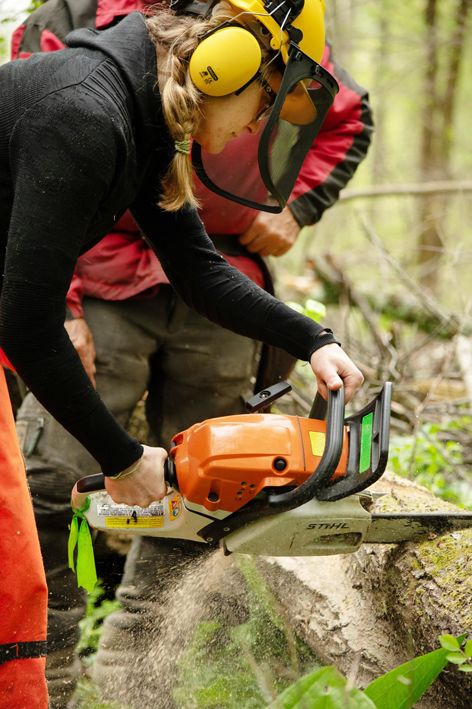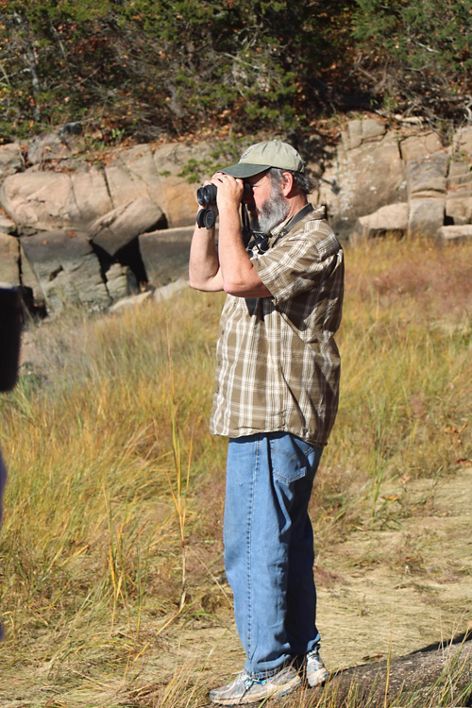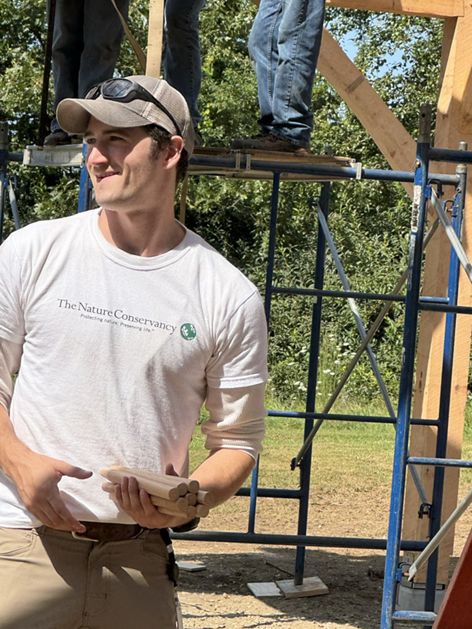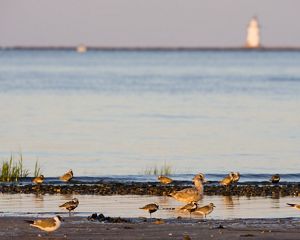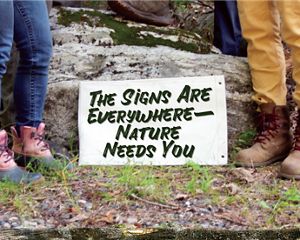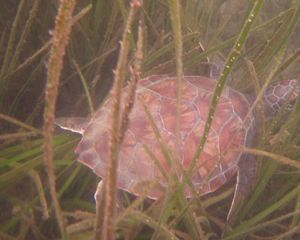Into The Woods
The Nature Conservancy shares a glimpse of what it means to care for its Connecticut nature preserves.
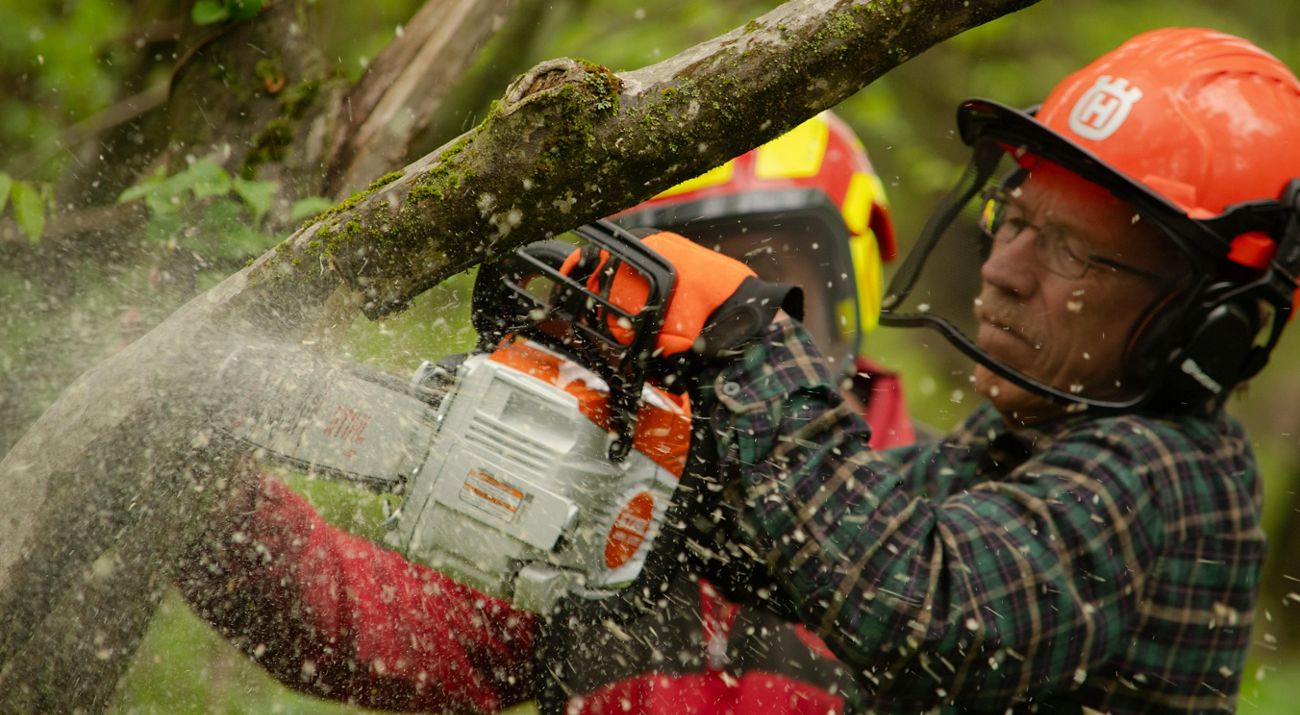
Ask Ben Croll what kind of gear he carries and he’ll rattle off quite the list. Today, he has clippers for trail maintenance, a small flashlight, a tablet for land data, an orange folding saw, first aid supplies, a belt that doubles as a rope, and more in a backpack.
Croll and other members of The Nature Conservancy’s Connecticut land stewardship team are prepared for anything needed by a visitor or by the land itself. They are the eyes and ears of the TNC’s preserves…caretakers of rivers, trails, wildlife and plants, and at the same time, ambassadors who welcome visitors of all ages, abilities and interests.
The nature of this work can be unpredictable (like when a hiker needs help finding their way before sunset) and at times grueling (like when storm-toppled trees need to be cleared from a trail). Behind the scenes, especially in the summer, land stewards are leading the way on TNC preserves in more ways than anyone could imagine.
Something’s Growling in the Forest . . .
. . . But it’s not a wild animal. On this cloudy morning at TNC's Sunny Valley Preserve, the sound bellows from a chainsaw. TNC’s land stewards have gathered for training on the equipment. Bore cuts and tongue-and-grooves, throttle locks and chain breaks, dead limbs and downed trees—it’s all covered. They want to sharpen their skills, especially for summer storms.
The team practices in a remote part of the preserve on branches that block their path, as well as on already fallen trees. It’s one of many different trainings land stewards complete to ensure that people, in addition to TNC lands, are protected. Throughout the year, they also attend sessions on geographic information systems (GIS), federal and state regulations pertaining to preserves, CPR and wilderness first aid.
Quote: Wayne Woodard
We have different types of storm damage. It’s not always simple, like a tree falling on a trail. We’re learning how to properly take care of that. It’s all about safety.
Nature is a ‘People Person’
At first glance, land stewardship focuses on all things nature. But the human side is essential. Nature is for everyone, and visitors travel to TNC’s preserves for hiking, bird-watching, leaf-peeping, cross-country skiing and snow-shoeing (when winter truly delivers) and peaceful moments by water.
Land stewards strive to make TNC’s nature preserves safe and enjoyable, whether someone is hiking for the first time or completing a blue-blazed trail challenge. For example, a digital kiosk (which runs on solar power) has been installed at TNC's Devils Den Preserve in Weston, and displays trail maps and other information in English and Spanish. TNC sponsors guided hikes at preserves, with some specifically tailored for new-to-hiking visitors. And a team recently delivered backpacks with supplies for outdoor exploration to a local school. In a variety of ways, they are inviting more people into nature, hoping to empower them to form their own rapport with the outdoors.
(Hiking) Boots on the Ground
Then there is monitoring. Checking and tracking and reporting, for each preserve, top to bottom. It’s how one land steward, Kieran Runne, found himself overnight in a tent. With multiple properties across the state needing monitoring, he took a unique approach to spending extra time in them.
But what exactly does monitoring entail? Visiting a property, walking on and off the beaten path, assessing vegetation, noting trail conditions, recording changes like encroachments or unauthorized trails or other uses, talking to neighbors, and outlining projects. Then, it’s compiling a report for every preserve and easement (totaling more than 100).
Quote: Kieran Runne
Monitoring and caring for land can be complex and challenging. You have to take a moment to simply soak up the beauty of nature. It means a lot to know we’re protecting it today so it can be preserved long into the future.
